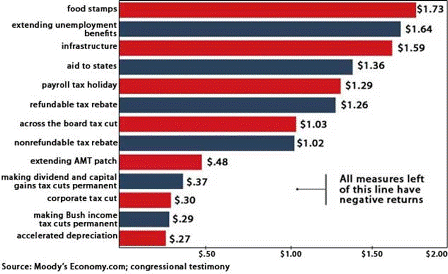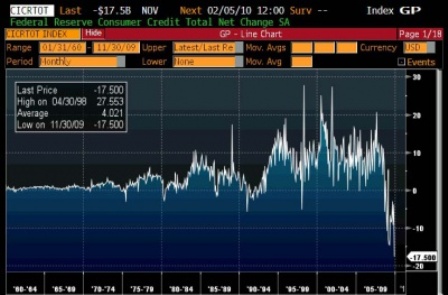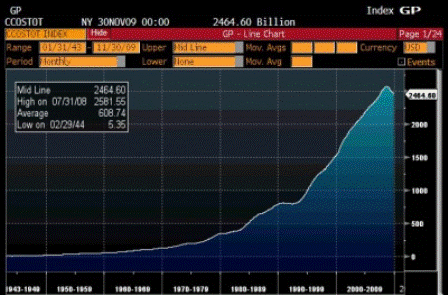To my great friends at AVM/III,
After 4 years in research and 20 years in sales, I am moving to trading (at Barclays). The ticker to buy puts on Barclays is “BARC LN Equity OMON”. I will be working for Ronti Pal who runs our swap and treasury desk. I will be managing a book that will (hopefully) take advantage of some of our longer term (6-12mos) strategic views. I am looking forward to this new challenge. Thankfully this is not “good-bye” as I asked to still act as a Relationship Manager for AVM. While I will not cover you guys day to day, I will still represent your interests here. So feel free to contact me for any issues. My first job in that role is to assign new capable coverage so that you are in good hands. I am happy to tell you that Colin McCleod will be filling that role with Sean Mahon as his back-up. Sean graduated from Harvard about four years ago and has developed into a motivated and capable saleperson. Sean went to Princeton and has been my right hand man for the last two years. So you have an “Ivy League” line-up :) Both are personable and have high integrity.
I started talking to AVM sometime in 1992 while at JP Morgan. It has been rewarding to get to know all the talented and creative people at your shop. I will miss covering you day to day but I look forward to maintaining a dialogue with some of you.
Cheers,
John Lobley
Category Archives: Uncategorized
Tax Receipts Rebound as 15 Biggest States See Gain
>
> (email exchange)
>
> On Tue, Mar 30, 2010 at 2:27 PM, Jason wrote:
>
> State tax receipts are reportedly up…
>
Yes, federal looking like they’ve bottomed as well.
Definitely looks like activity has bottomed.
And still feels like we are going the way of Japan, but too early to tell.
>
> Granted we are still well below 2008 peak revenue levels
>
> and the budget crisis is far from over.
>
> But Muni CDS remains near the wide end of the range when compared with
> Corporate IG:
>
> Still looks like a great trade to me…
>
Tax Receipts Rebound as 15 Biggest States See Gain
By Dunstan McNichol
March 30 (Bloomberg) — The two-year slide in taxcollections that opened a $196 billion gap in U.S. state budgets
has stopped, easing pressure on credit ratings and giving leeway
to lawmakers as they craft spending plans for next year.
The 15 largest states by population forecast a 3.9 percentgain in tax revenue in fiscal 2011, budget documents show. The
50 states on average may increase collections by about 3.5
percent, the first time in two years the figure is expected to
grow, said Mark Zandi, chief economist at Moody’s Economy.com,
California took in 3.9 percent more since December thanprojected in January, Controller John Chiang said this month.
New York got $129 million above forecasts in its budget year
through February, according to a report from Comptroller Thomas
DiNapoli. In New Jersey, the second-wealthiest state per capita,
January sales-tax collections were 1.9 percent higher than a
year earlier, the first annual increase in 19 months,
forecasters said in a report last month.
“This time last year, we were sliding down a mountain,”said David Rosen, chief budget officer for the New Jersey
Legislature. “I don’t think we are now; it’s stabilized.”
States collected about $79 billion less in sales, incomeand corporate taxes in 2009 than in 2008, the U.S. Census Bureau
said today in a report, as the economy struggled through its
deepest slump since the Great Depression. Emergency spending
cuts and tax increases became routine during the recession that
began in December 2007.
‘Panic Mode’
The end of the collections crash will ease fiscal strainsthat led New York-based Moody’s Investors Service to lower the
ratings of five states last year, after no downgrades in 2008.
It will also enable governors and legislators to draw up budgets
for fiscal 2011, which starts July 1 for most states, with more
confidence that money they plan to spend will arrive.
“As long as revenues were sliding, budgeters were in apanic mode,” said Zandi, whose West Chester, Pennsylvania-based
company provides economic analysis to businesses, government and
investors. “It’s not as scary when revenues are rising.”
States’ combined budget gaps will still total $180 billionin fiscal 2011 and $120 billion in fiscal 2012, the Washington-
based Center on Budget and Policy Priorities estimates.
Economic Growth
This fiscal year, the 15 largest states expect to collect11 percent less taxes than in fiscal 2008, budget proposals
show. It won’t be until 2013 that revenue returns to 2008
levels, said New Jersey’s Rosen and Barry Boardman, the North
Carolina General Assembly’s chief economist.
Collections of personal income and sales taxes, the twolargest components of state revenue, fell by 17 percent and 7
percent, respectively, last year compared with 2008, according
to the Census Bureau. Declines were less steep in the fourth
quarter than earlier in the year, with income taxes dropping by
4.7 percent to $59.9 billion and sales taxes sliding by 2.8
percent to $71.7 billion.
Corporate taxes increased 3.4 percent to $9.1 billion inthe fourth quarter, the Census Bureau said, after declining in
seven of the previous nine quarters.
Combined state and local tax collections climbed to $360.1billion during the final three months of 2009, the first year-
over-year gain in five quarters and an almost 1 percent boost
from the same period in 2008, according to the agency.
State coffers are beginning to get a boost from an economythat expanded at a 5.6 percent annual rate in the fourth quarter
of 2009, the most in six years. That’s stopped the drop in sales
tax collections, which generated $23 billion less last year than
in 2008, according to the Census Bureau.
Predictability a ‘Positive’
Arizona, which sold state buildings and canceled health
insurance for 47,000 children as collections this fiscal year
fell 34 percent below 2007 levels, said its January revenue was
$14.2 million above projections, the first time since March 2007
that collections exceeded forecasts.
Virginia recorded a 31.6 percent increase in corporatetaxes through February, it said on March 11. Governor Robert
McDonnell, a Republican who took office in January, increased
this year’s revenue projections by $82.5 million last month.
Improved revenues may help states replenish reserves, curbborrowing for expenses and strengthen their debt ratings, said
Robin Prunty, credit analyst for Standard & Poor’s in New York.
“Just having predictability is a positive from a creditstandpoint,” Prunty said.
“We’ve seen the worst,” said Philip Condon, who overseesabout $9.4 billion in municipal bonds for DWS Investments in
Boston. “While it may not be great, it’s getting better.”
California Sale
DWS was among the buyers of last week’s $3.4 billion
issuance of taxable California bonds, its first such sale since
November. A scarcity of municipal debt, coupled with indications
that California’s revenue decline may have reached bottom,
attracted investors and drove down bond yields, Condon said.
“The recent uptick in revenue collections certainly didn’thurt us,” said Tom Dresslar, a spokesman for Treasurer Bill
Lockyer in Sacramento.
Forty-five states reduced outlays for health care, theelderly and disabled and primary and higher education in 2008
and 2009, the Center on Budget and Policy Priorities said.
Lawmakers now may be able to restore spending or avoidfurther reductions. California’s Chiang this month scrapped a
plan to delay tax refunds after revenue exceeded projections for
three months. In January, an impasse over the state’s $20
billion budget imbalance led S&P to cut its credit rating to A-,
the lowest of any state.
“The fact that revenues are performing better I think iscertainly the first bit of good news we’ve heard in a long
time,” said Amy Doppelt, a San Francisco-based managing
director at Fitch Ratings who follows California. Fitch last
year downgraded more than 200 municipal issuers, the most ever,
according to a March 25 report from the rating company.
Negative Outlook
S&P lowered its rating on California, Illinois and Arizonalast year and has a negative outlook on those and four other
states. Moody’s cut those three plus Nevada and Ohio, its first
state downgrades since Michigan in 2007. It’s negative on 15,
including five of the 10 largest: Florida, Illinois,
Pennsylvania, Ohio and Michigan.
Jobless rates in 18 states including Florida and RhodeIsland exceeded the national average of 9.7 percent in February.
Unemployment in most states is about double pre-recession
levels, according to the Labor Department.
Michigan, with the nation’s highest unemployment rate at14.1 percent in February, is in its 10th year of job losses and
expects to end fiscal 2011 with the fewest jobs in 24 years.
“As the employment situation continues to be weak, incometax revenues will continue to lag,” the Center on Budget and
Policy Priorities said in a Feb. 25 report.
Pension Expenses
As workers lose income, states face rising expenses forMedicaid and other social services. Through March, they had
borrowed $37 billion from the federal government to cover
unemployment benefits, the Treasury Department said.
States face a $1 trillion gap between assets in publicpension plans and their obligations to retirees, a Feb. 18 study
by the Washington-based Pew Center on the States said. Illinois
borrowed $3.5 billion in January to finance its pension
contribution, which led Moody’s and S&P to cut their ratings to
the second-lowest of any state.
More Jobs
“You can’t exclude the expense side,” said Howard Cure,New York-based director of municipal research for Evercore
Wealth Management LLC, which oversees $1.7 billion, half in
fixed-income municipals. “What really would alleviate that
situation is more jobs.”
States also have to prepare for the June 2011 end of helpfrom the American Recovery and Reinvestment Act, which will
provide them with about $140 billion of aid since its inception
in February 2009.
“States may have reached the end of the beginning of amultiyear fiscal crisis,” the Nelson A. Rockefeller Institute
of Government in Albany, said in a January report. “The best to
be hoped for in 2010 may be the beginning of the end.”
Health care
Looks like bad macro- various taxes kick in right away while increased expenses start a few years later.
It’s completely backwards for this point in the business cycle.
Health-Care Bill Would Increase Taxes On Wages, Investments
March 19 (Bloomberg) — High-income families would be hit with a tax increase on wages and a new levy on investments under President Barack Obama’s health care overhaul bill.
Payroll Tax Holiday and aid to states have a good bang for the buck
The least bang for the buck the better- means taxes can be that much less for a given amount of gov spending.
Billyblog
Professor Bill Mitchell’s blog is about as good as it gets if you have 20 minutes for a comprehensive, scholarly review of how it all works:
billy blog
Portugal going parabolic as well
Obama Plans to Raise as Much as $120 Billion From Bank Fees
Seems like the wrong time to be cutting aggregate demand?
Obama Plans to Raise as Much as $120 Billion From Bank Fees
By Hans Nichols
Jan. 12 (Bloomberg) — President Barack Obama plans to impose a fee on banks expected to raise about $120 billion in order to help recoup losses from the Troubled Asset Relief Program, according to an administration official.
The White House hasn’t settled on the final structure of the fee and how to target the big banks that have returned to profitability, said the official, who request anonymity.
The plan is to have revenue from the fee dedicated to deficit reduction and to cover the amount that the Treasury Department estimates it will lose from TARP, which is $120 billion. Details will be contained in the fiscal 2011 budget that Obama will submit to Congress next month, the official said.
Agreed.
[top]
November consumer borrowing plunged $17.5 billion
Also, when net financial assets (savings) are being ‘supplied’ by deficit spending there it that much less need to borrow
for the same spending, and, in any case, the deficit spending can reduce what would have otherwise been borrowed to spend by that amount.
The amounts all depend on who gets the deficit spending. If the man in the moon wins the national lottery and gets $1T in deficit spending and just rolls it in t bills there is no further economic/financial effect on anything, to use the extreme example to make the point.
In general, the current deficit spending is functioning to allow more consumption out of income rather than out of savings/debt as income and net financial assets are added to the economy. The Fed’s financial burdens ratios are coming down, and financial equity is being restored.
Agonizingly and irresponsibly slowly.
It’s a disgrace to the economics profession that they haven’t figured out how to sustain demand when all it takes
are a few spread sheet entries by govt.
I could teach any third grader to do it in 15 minutes.
Yesterday we got a live Presidential announcement over $2.4 billion in new clean energy spending to create 2,000 jobs.
With over 15 million unemployed and an annual shortfall of aggregate demand that’s could be well over $1 trillion.
In November total credit dropped 8.5% annualized rate, and while auto-related nonrevolving loans dropped a mere -2.9%, revolving credit plunged 18.5% annualized. This is a full blown consumer borrowing revolt.
Here is the month over month change in total consumer credit:
A chart of total consumer credit: in November it was at $2.464 trillion, after a record 10 sequential months of decline.
[top]
Auerback Critiques Bernanke
Well stated!!
Bernanke doesn’t understand the basic economics of central banking
By Marshall Auerback
Dec 19 — I would like to incorporate a critique of quantitative easing based on Bernanke’s comments in Ed’s post “Quantitative easing and inflation expectations.”
You’ve got to focus on improving the conditions for potential borrowers, not on the banks’ balance sheets. Banks are never reserve constrained. Even the BIS, the central banks’ central bank, understands this. In a recent report, the BIS said the following:
In fact, the level of reserves hardly figures in banks’ lending decisions. The amount of credit outstanding is determined by banks’ willingness to supply loans, based on perceived risk-return trade-offs, and by the demand for those loans. The aggregate availability of bank reserves does not constrain the expansion directly.
It is obvious why this is the case. Loans create deposits which can then be drawn upon by the borrower. No reserves are needed at that stage. Then, as the BIS paper says:
in order to avoid extreme volatility in the interest rate, central banks supply reserves as demanded by the system.
The loan desk of commercial banks have no interaction with the reserve operations of the monetary system as part of their daily tasks. They just take applications from credit worthy customers who seek loans and assess them accordingly and then approve or reject the loans. In approving a loan they instantly create a deposit (a zero net financial asset transaction).
The only thing that constrains the bank loan desks from expanding credit is a lack of credit-worthy applicants, which can originate from the supply side if banks adopt pessimistic assessments or the demand side if credit-worthy customers are loathe to seek loans. Banks are never reserve constrained, so this comment below from Bernanke is either ignorant or deliberately misrepresents the actual operations of the banking system (as opposed to the nonsensical Economics 101 version).
Ultimately, if the economy normalized, and the Fed took no action, the banks would take those reserves, try to lend them out, and they would begin to circulate, and the money supply would start to grow. And then, ultimately, that would create an inflationary risk. So, therefore, as the economy begins to recover, and as we move away from this very weak economic environment, the Federal Reserve is going to have to pull those reserves out of the system.
The mainstream belief is that quantitative easing will stimulate the economy sufficiently to put a brake on the downward spiral of lost production and the increasing unemployment. Quantitative easing merely involves the central bank buying bonds (or other bank assets) in exchange for deposits made by the central bank in the commercial banking system – that is, crediting their reserve accounts. It is commonly claimed that it involves “printing money” to ease a “cash-starved” system, and based on the erroneous belief that the banks need reserves before they can lend and that quantitative easing provides those reserves. That is a major misrepresentation of the way the banking system actually operates.
Bank lending is not “reserve constrained.” Banks lend to any credit worthy customer they can find and then worry about their reserve positions afterward. Even the BIS recognizes this. In reality, if the banks are short of reserves then they borrow from each other in the interbank market or, ultimately, they will borrow from the central bank through the so-called discount window. They are reluctant to use the latter facility because it carries a penalty (higher interest cost). But the reason that the commercial banks are currently not lending much is because they are not convinced there are credit worthy customers on their doorstep.
The current incoherence of our economic policy making could diminish if we had a Fed chairman who understood how the banking system genuinely operated, as well as one who would understanding the linkages between banking lending and fiscal policy, which he persistently downplays (or even worse when he starts calling for long term reforms to balance the Federal government’s budget). It is a national tragedy that this man is being given the chance at another term in office.
[top]
Greece – the catalyst on the puke in cash and CDS today was
Still looks to me like it’s probably one go all go as Greece guarantees its own banks and should deposit insurance be questioned a general run on the entire euro banking system could be triggered. That could result in the close the entire payments system until it’s all reorganized with credible deposit insurance. Much like the US in 1934.
Greece – the catalyst on the puke in cash and CDS today was
was the S&P action yesterday. The ECB this year relaxed their
own rules to accept collateral to BBB- from A-. This
accomodating criteria will last until the end of 2010. If the
ECB were todecide to go back to the status quo ante in January
2011 then GGBs may not be eligible as ECB collateral (assuming
S&P follows the negative watch with a downgrade).
Greece suffering badly in cash markets (helped by low liquidty
due to a religious holiday in Italy and Spain).In 3Y, Greek bonds
are losing some 35 bp to Germany, In 10Y it’s about 28 bp.
[top]






